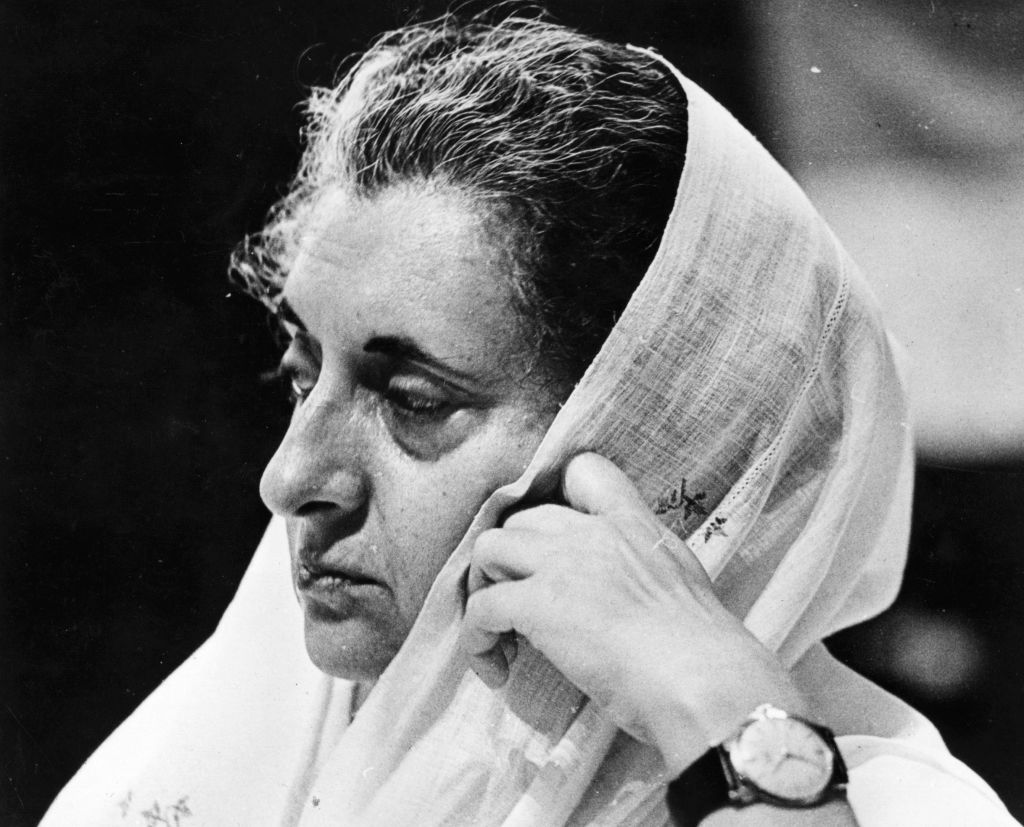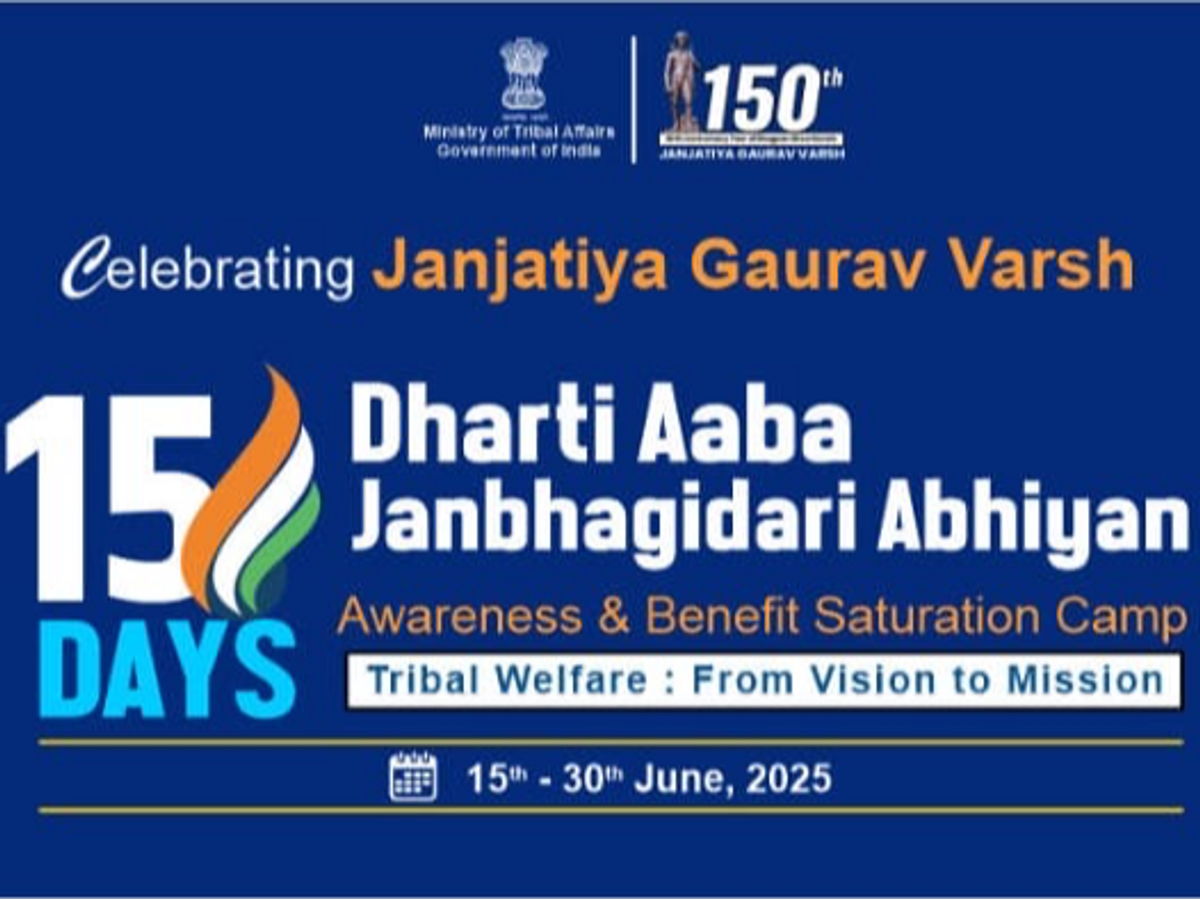India’s Coffee Exports

- 28 Jun 2025
In News:
India has emerged as a significant player in the global coffee trade, with its exports witnessing a sharp rise of 125% in the past 11 years, increasing from $800 million in 2014–15 to $1.8 billion in 2023–24, and continuing the momentum with over 25% growth in FY2025–26. This export surge highlights India's expanding footprint in the global premium coffee market, driven by a blend of policy support, sustainable cultivation practices, and global demand for specialty coffee.
Key Drivers of Export Growth
The Coffee Board of India, under the Ministry of Commerce, has played a pivotal role in this transformation through:
- Digitalisation of export permits, RCMC, and certificates of origin.
- Export incentives like freight and transit assistance—?3/kg for value-added exports and ?2/kg for green coffee to distant markets (e.g., US, Canada, Japan, Nordic countries).
- Subsidy support of 40% (up to ?15 lakh) for processing units (roasting, grinding, packaging).
- Global market intelligence and regular industry engagement to remove bottlenecks.
- Promotion via GI tags and digital branding campaigns.
These efforts have enhanced India’s readiness to meet stringent import regulations (e.g., EU deforestation norms) while enabling access to new and emerging markets.
Production and Cultivation
India is the 7th largest producer of coffee globally, accounting for about 3.5% of world production and ranks 5th in global coffee exports with a 5% share. The country produces 3.5–4 lakh tonnes of coffee annually, with Karnataka (70%), Kerala, and Tamil Nadu being major contributors.
- Arabica varieties: Kents, S.795, Cauvery, Selection 9.
- Robusta: High-yielding selections suited to Indian climate.
Climatic Features:
- Grown under two-tier shade canopies with over 50 native tree species.
- Arabica thrives at 1000–1500m, Robusta at 500–1000m altitudes.
- Requires 1600–2500 mm rainfall and 15°C–25°C temperature.
India is unique as the only country that cultivates 100% shade-grown coffee, which promotes biodiversity, soil and water conservation, and ensures a sustainable income for 2 million people, including small and marginal farmers.
Specialty and GI-Tagged Coffee
India’s coffee is known for its mild acidity, full-bodied flavour, and fine aroma. Intercropping with spices like pepper, cardamom, and vanilla further enhances its appeal. The country also boasts five regional and two specialty coffees with Geographical Indication (GI) tags, strengthening brand value in global markets.
The historic legacy of Indian coffee dates back over 400 years to the planting of coffee beans by Baba Budan in Karnataka, making it one of the oldest coffee traditions in Asia.
The Emergency in India (1975–1977)

- 28 Jun 2025
In News:
The declaration of Emergency in India from 25 June 1975 to 21 March 1977 marks one of the most debated and transformative chapters in the country’s post-independence history. Proclaimed under Article 352 of the Constitution citing “internal disturbance”, this period had far-reaching legal, political, and social consequences. It served as a stress test for India’s democratic institutions and led to significant constitutional reforms.
Background:
- The early 1970s were marked by growing political discontent. Nationwide protests, especially in Bihar and Gujarat, were spearheaded by Jayaprakash Narayan against issues such as rising unemployment, inflation, corruption, and misuse of political power.
- The immediate provocation came from the Allahabad High Court’s judgment on 12 June 1975, which found Prime Minister Indira Gandhi guilty of electoral malpractice in her 1971 Lok Sabha campaign. The Court disqualified her from contesting elections for six years under the Representation of the People Act, 1951.
- Though the Supreme Court granted a conditional stay, political pressure intensified, with mass movements demanding her resignation.
Proclamation of Emergency
On 25 June 1975, President Fakhruddin Ali Ahmed, on the advice of the Prime Minister, declared a national Emergency under Article 352, citing internal disturbance. This was the third Emergency in India — the first two being during external wars (1962 with China and 1971 with Pakistan). However, this was the first peacetime Emergency.
Constitutional Basis
At that time, Article 352 allowed Emergency on three grounds:
- War
- External Aggression
- Internal Disturbance (later amended to “armed rebellion” by the 44th Amendment, 1978)
Suspension of Fundamental Rights
Two days later, on 27 June 1975, the government invoked:
- Article 358: Automatically suspended the freedoms under Article 19 (freedom of speech, assembly, movement, etc.)
- Article 359: Allowed suspension of Articles 14, 21, and 22, stripping protections related to equality before law, life and personal liberty, and protection against preventive detention.
Citizens lost access to courts for constitutional remedies. Prominent opposition leaders, including Jayaprakash Narayan, Morarji Desai, Atal Bihari Vajpayee, and L.K. Advani, were arrested under the Maintenance of Internal Security Act (MISA). According to the Shah Commission, around 35,000 individuals were detained without trial.
Censorship and Media Suppression
From 26 June 1975, press censorship was imposed. Newspapers were mandated to get clearance from government-appointed censors before publication. International news coverage was also tightly controlled, with telex messages of foreign correspondents placed under surveillance.
Key developments:
- On 20 July 1975, the Board of Film Censors was restructured to impose stricter control over cinema.
- On 1 February 1976, the four national news agencies — PTI, UNI, Samachar Bharati, and Hindustan Samachar — were merged into ‘Samachar’.
- The Press Council of India was dissolved.
Constitutional Amendments and Legislative Overreach
Several constitutional amendments were enacted to consolidate power:
- 38th Amendment (1975): Made the President’s Emergency declaration non-justiciable.
- 39th Amendment (1975): Excluded Prime Minister’s election from judicial review.
- 42nd Amendment (1976) (termed “Mini-Constitution”):
- Gave primacy to Directive Principles over Fundamental Rights
- Extended Lok Sabha and State Assembly terms from 5 to 6 years
- Limited judicial review, centralised authority
- Empowered Parliament to amend the Constitution without court scrutiny
Sterilisation Campaign
One of the most controversial aspects was the forced sterilisationprogramme led by Sanjay Gandhi. While aimed at population control, it resulted in widespread coercion and human rights violations.
- 1975–76: 26.42 lakh sterilisation procedures
- 1976–77: 81.32 lakh
- Total over two years: 1.07 crore
- Many were linked to access to ration cards, housing, loans, and employment
End of Emergency and Democratic Reversal
The Emergency was revoked on 21 March 1977. In the subsequent general elections (March 1977), the Congress party was defeated, and the Janata Party under Morarji Desai assumed power. This marked the first non-Congress government at the Centre
Post-Emergency Reforms: The Shah Commission and 44th Amendment
The Shah Commission (1977–79)
Set up in May 1977, chaired by Justice J.C. Shah, it investigated:
- Illegal arrests and detentions
- Press censorship
- Forced sterilisation
- Bureaucratic misuse and political excesses
44th Constitutional Amendment (1978)
To prevent future misuse:
- Replaced “internal disturbance” with “armed rebellion” as a ground for Emergency
- Restored judicial review of Emergency proclamations
- Safeguarded Fundamental Rights, particularly Articles 20 and 21
- Ensured Cabinet approval was mandatory before Emergency declaration
Dharti AabaJanbhagidari Abhiyan (DAJA)

- 28 Jun 2025
In News:
In a landmark initiative for tribal inclusion, the Government of India has launched the Dharti AabaJanbhagidari Abhiyan (DAJA)—India’s largest-ever tribal outreach and empowerment campaign. The programme aims to ensure saturation of welfare schemes and promote tribal pride and participation, covering over 1 lakh tribal villages and PVTG habitations across 31 States and Union Territories.
What is DAJA?
- Full Name: Dharti AabaJanbhagidari Abhiyan — named in honour of Bhagwan Birsa Munda, a revered tribal freedom fighter.
- Launched by: Ministry of Tribal Affairs, Government of India.
- Nature: A people-centric campaign focused on participatory governance and last-mile delivery of services among Scheduled Tribes (STs) and Particularly Vulnerable Tribal Groups (PVTGs).
Objectives of DAJA
- Saturate government welfare schemes across all tribal settlements.
- Empower over 5.5 crore tribal citizens through Janbhagidari (people’s participation).
- Preserve and promote tribal identity and cultural heritage, invoking the legacy of Birsa Munda.
- Strengthen last-mile governance through technological and administrative convergence.
Key Features:
Feature Description
Geographic Coverage - 1 lakh+ tribal villages, including remote PVTG habitations, across 31 States/UTs.
Scheme Integration - Converges services such as Aadhaar, Ayushman Bharat, PM Kisan, PM
Ujjwala, Jan Dhan, pension schemes, and Forest Rights Act (FRA) claims.
Five Foundational Pillars -
- Janbhagidari (people’s participation)
- Saturation of welfare benefits
- Cultural inclusion
- Convergence of schemes
- Last-mile delivery
Technology-Driven Monitoring - Use of real-time dashboards and data analytics for
transparent tracking and reporting.
Cultural Revival - Celebrates tribal cuisines, folk arts, handicrafts, and oral traditions
during outreach camps to reaffirm cultural identity.
Significance:
- Governance: Represents a shift toward targeted and integrated tribal welfare, reducing administrative fragmentation.
- Inclusion: PrioritisesPVTGs, often the most marginalised and underserved groups.
- Empowerment: Embeds a participatory model, aligning with the spirit of democratic decentralisation.
- Cultural Reaffirmation: Bridges the gap between development and cultural identity, crucial for tribal dignity and preservation.
India’s Data Imperative – The Pivot Towards Quality
- 28 Jun 2025
In News:
In a significant policy intervention, NITI Aayog has released the report titled “India’s Data Imperative: The Pivot Towards Quality”, calling for urgent reforms to enhance the integrity, interoperability, and usability of India’s public data systems. The report underscores the critical role of data in governance, welfare delivery, and digital innovation.
Understanding India’s Public Data Ecosystem
India's data ecosystem constitutes a vast digital public infrastructure that powers governance and service delivery across sectors. It integrates identity, finance, health, and welfare through data-centric platforms:
- Aadhaar: Over 27 billion authentications in FY 2024–25; foundational for identity-linked services.
- UPI: Handles transactions worth ?23.9 trillion monthly — the world’s largest real-time digital payment system.
- Ayushman Bharat Digital Mission: 369 million health IDs issued; enhancing interoperability in healthcare.
- Direct Benefit Transfer (DBT): ?5.47 lakh crore transferred in FY 2024–25 across 330+ schemes.
- Aadhaar e-KYC: 1.8 billion transactions, significantly reducing onboarding costs and time.
- Digital Inclusion: Over 1.2 billion mobile subscribers and 800 million internet users reflect the scale of India’s digital penetration.
Why India Needs a Quality-Driven Data Ecosystem
- Curb Fiscal Leakage:Inaccurate or duplicate data inflates welfare expenditure by 4–7% annually.
- Enable Evidence-Based Governance:Data-driven insights power AI-led service delivery, improve beneficiary targeting, and strengthen accountability.
- Foster Public Trust:The legitimacy of digital governance depends on accurate, timely, and reliable data systems.
- Strengthen India’s AI & Innovation Ecosystem:Clean, validated data is essential for building AI applications in healthcare, agriculture, and citizen services.
- Enhance Cross-Ministerial Coordination:Interoperable data frameworks help break silos and improve policy coherence across ministries.
Key Challenges in India’s Data Governance Landscape
Challenge Description
Fragmentation Departmental silos with non-standardised data formats hinder seamless integration.
Lack of Ownership Absence of clear data custodians leads to accountability gaps.
Legacy Systems Outdated IT systems impede real-time updates and data sharing.
Incentive Mismatch Existing frameworks reward speed over accuracy, eroding data quality.
Poor Quality Culture A prevailing acceptance of “80% accuracy is good enough” weakens long-term integrity.
NITI Aayog’s Recommendations for Reform
- Institutionalise Data Ownership:Designate dedicated data custodians at national, state, and district levels to oversee quality.
- Incentivise Accuracy:Incorporate data quality metrics into performance appraisals and financial allocations.
- Promote Interoperability:Adopt standards like IndEA (India Enterprise Architecture) and NDGFP (National Data Governance Framework Policy) to ensure consistency.
- Use Practical Tools:Implement tools like the Data Quality Scorecard and Maturity Framework for ongoing assessment.
- Build Capacity:Train field-level personnel and managers to prioritise data fidelity as a core administrative function.
Significance of the Report
This report arrives at a critical juncture when India is rapidly expanding its digital public infrastructure but faces risks from data inaccuracy, siloed systems, and erosion of trust. By shifting focus from quantity to quality, NITI Aayog envisions a resilient, inclusive, and innovation-friendly data regime—essential for achieving Digital India goals and Sustainable Development Objectives.
Total Revolution
- 28 Jun 2025
In News:
India commemorates the 51st anniversary of Jayaprakash Narayan’s (JP) historic call for “Sampoorna Kranti” or Total Revolution, first proclaimed on June 5, 1974, at Gandhi Maidan, Patna. The movement remains a landmark in India's democratic evolution, reflecting enduring concerns over governance, democracy, and civic empowerment.
What is Total Revolution?
- Concept: A holistic, non-violent movement rooted in Gandhian ideals, aimed at comprehensive transformation—political, economic, social, cultural, and spiritual.
- Vision: Building a just and equitable society through decentralised democracy, moral rejuvenation, and participatory governance.
- Leadership: Spearheaded by Jayaprakash Narayan (JP), advocating a “party-less democracy” blending Gandhian ethics, Sarvodaya ideals, and Marxist critique.
Underlying Causes of the Movement
- Electoral Legitimacy Crisis:The 1975 Allahabad High Court judgment disqualified Prime Minister Indira Gandhi for electoral malpractices, eroding her authority and galvanising mass opposition.
- Youth Unrest:Movements like Navnirman Andolan (Gujarat) and Bihar student protests reflected mounting youth dissatisfaction over unemployment and poor governance.
- Economic Distress:The early 1970s saw inflation exceeding 20%, acute unemployment, and food shortages, leading to widespread discontent.
- Democratic Backsliding:Use of draconian laws like MISA, increased centralisation, and suppression of dissent led to civil society mobilisation.
- Charismatic Mobilisation:JP’s appeal for non-violent civic awakening and his ability to unify diverse ideological streams helped launch a broad-based national movement.
Core Components of the Total Revolution
Domain Focus
Political Advocated bottom-up governance, decentralisation, and accountability
to counter bureaucratic authoritarianism.
Economic Promoted land reforms and people-centric development to address inequality.
Social Called for eradication of casteism, gender bias, and dowry to foster egalitarianism.
Educational Suggested reforms emphasisingethics, rural upliftment, and vocational training.
Cultural-Spiritual Encouraged self-discipline, national unity, and moral regeneration.
Impact of Total Revolution
On Society and Citizenry
- Youth Mobilisation: Inspired a generation of political leaders—Lalu Prasad Yadav, Nitish Kumar, Sushil Modi—who reshaped regional politics.
- Civic Engagement: Fostered a deeper culture of public accountability and democratic participation.
- Non-Violent Resistance: Reinforced the efficacy of peaceful protest, a legacy echoed in later movements like Anna Hazare’s anti-corruption crusade.
On Governance and Policy
- Collapse of Congress Monopoly: Led to the formation of the Janata Party, marking a historic electoral defeat for the Congress in 1977.
- Constitutional Safeguards: Triggered the 44th Constitutional Amendment, curbing emergency powers and restoring judicial oversight.
- Democratic Deepening: Inspired Panchayati Raj reforms through the 73rd and 74th Amendments, enhancing grassroots democracy.
Significance and Contemporary Relevance
- Democratic Dissent: Reinvigorated the right to protest as a fundamental democratic tool.
- Leadership Incubation: Nurtured mass-based political leadership, altering India’s political landscape.
- Institutional Vigilance: Exposed systemic vulnerabilities, prompting long-term institutional reforms.
- Civic Awakening: Broadened the role of civil society in governance beyond electoral cycles.
- Modern-Day Lessons: Offers vital insights for addressing centralisation of power, youth alienation, and democratic backsliding in contemporary India.
